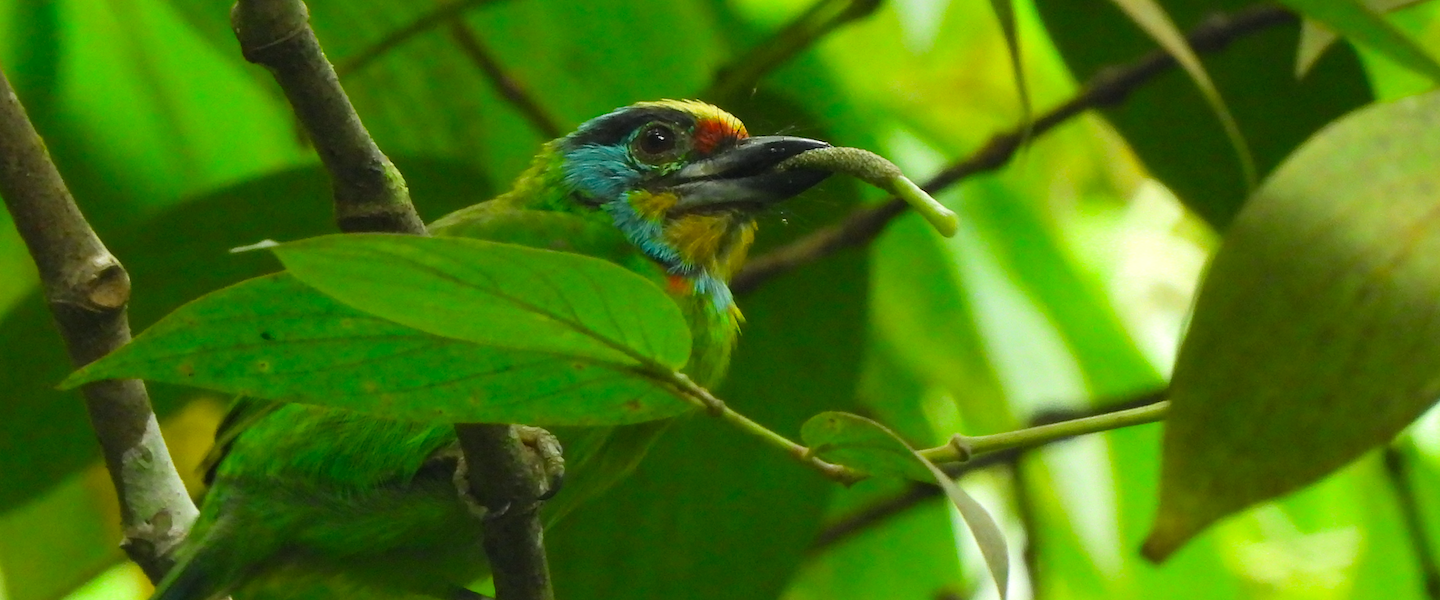The massive Ebro River flows into the Mediterranean Sea at the southern end of Catalonia, forming a large delta that interrupts the otherwise linear Mediterranean coastline. Thanks to this strategic location, an astonishing diversity of birds congregates in the area, especially during migration periods. For the last 10 years, the Delta Birding Festival has brought together bird enthusiasts and connoisseurs from all over Catalonia, Spain, and Europe during the third week of September — right in the middle of the postnuptial migration.
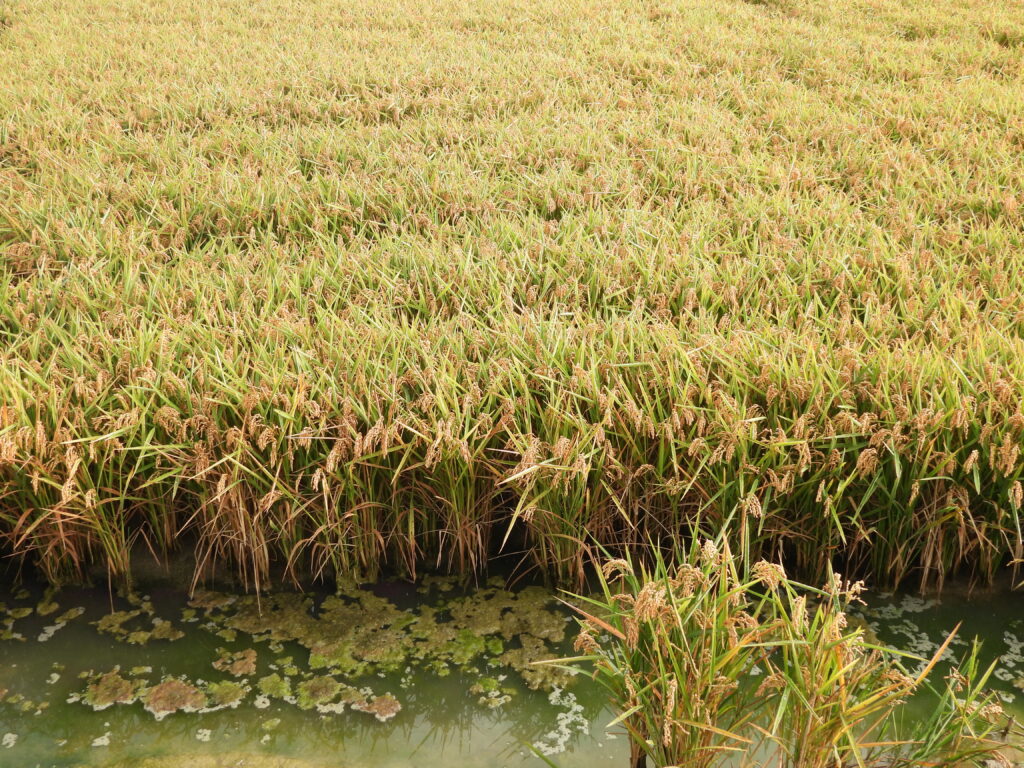
This being my first time attending DBF, I joined Marcos Real, Darío Gijón, Joan Balfagón, Munir Chaouni, Martín Rey, Arnau Rivera, Roi Benavente, and Guillem de los Santos. Over the weekend, we certainly did a lot of “Delta Birding,” but not so much of the “Festival” part, as some of us only made it into the actual venue on Sunday — and just barely — spending most of the weekend birdwatching around this prime location. I have distant memories of my only previous visit to the Delta, back when I was a kid, when I saw my first-ever glossy ibis (Plegadis falcinellus) and osprey (Pandion haliaetus). How things have changed.
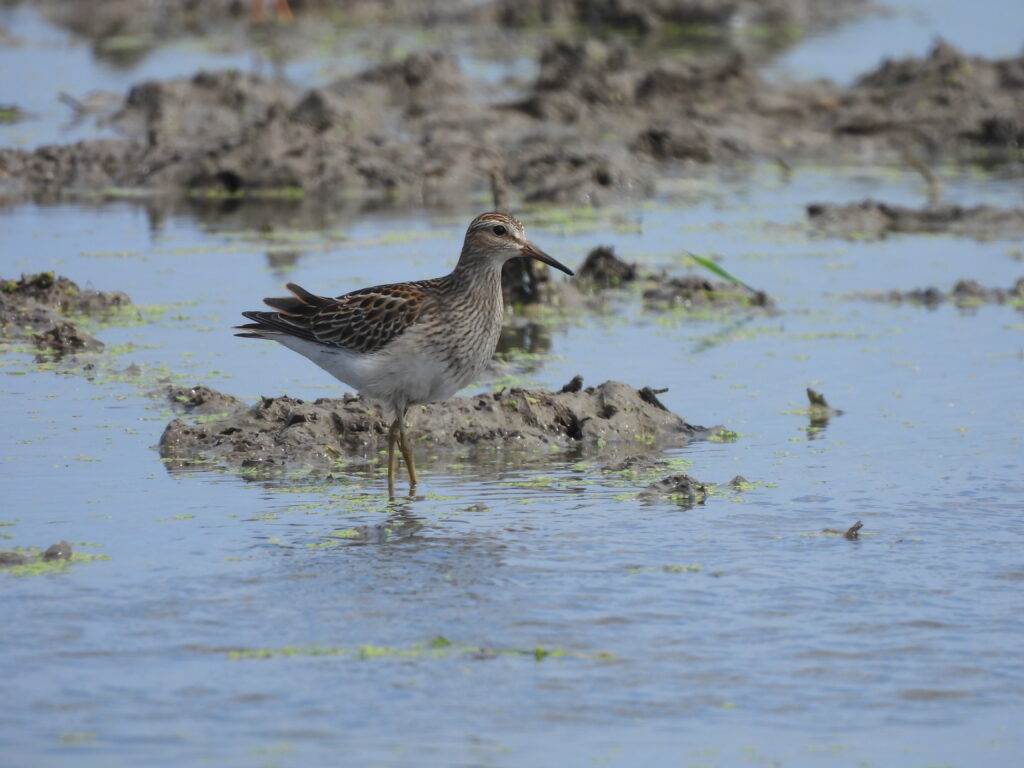
While the event officially starts on Friday, our schedules only allowed us to reach Vinaròs that evening, where we stayed at Munir’s and had an amazing taco at midnight by the beach — where we also spotted a flyby nightjar. We were all set for an awesome birdwatching weekend the next morning.
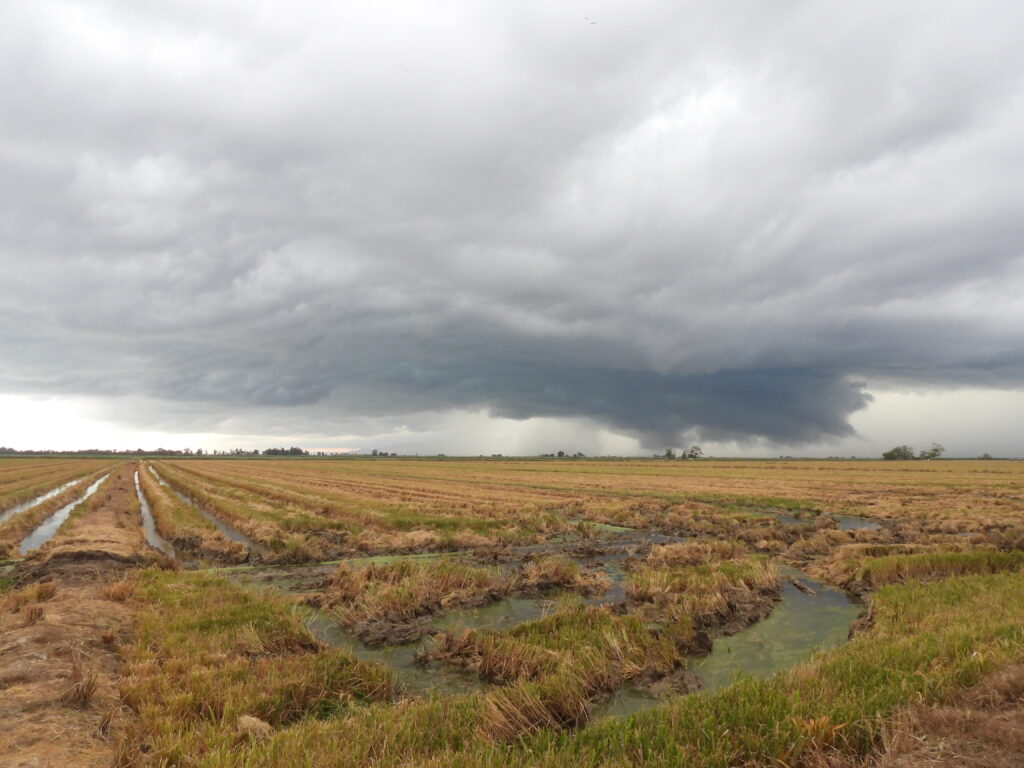
We headed to La Catxa, where Spain’s 4th-ever white-tailed lapwing (Vanellus leucurus) had been lingering for months. On the way, a flock of 20 white storks (Ciconia ciconia) was resting in some fields, and we connected with most of the common wetland species along the road.
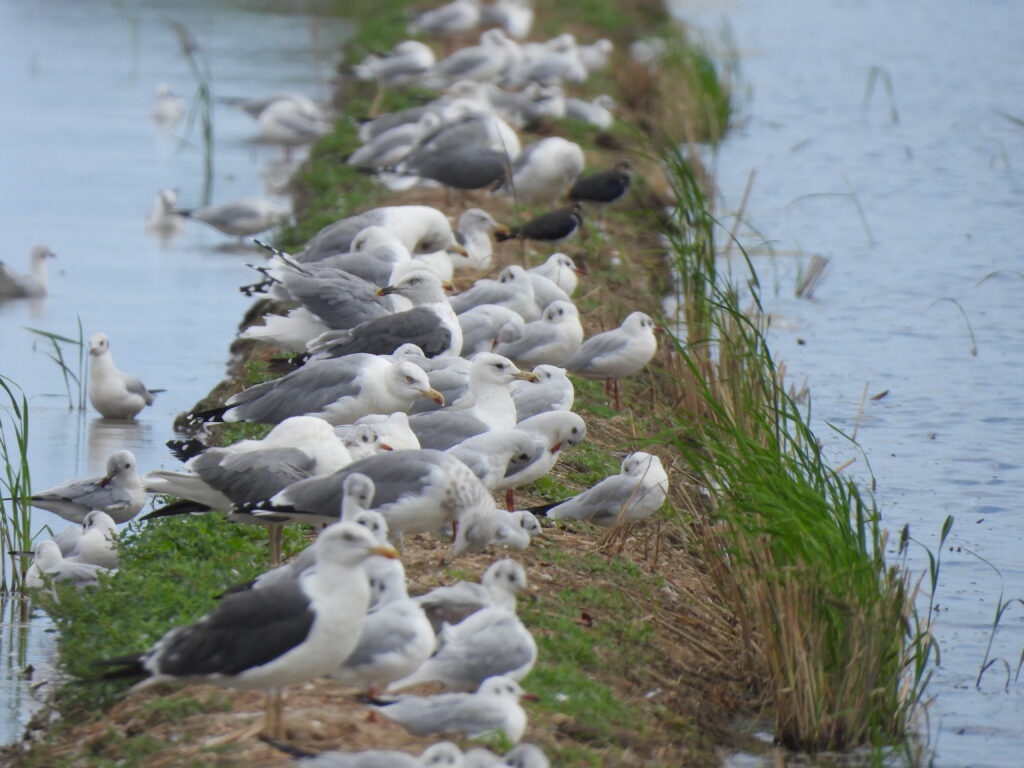
While our main target was not initially at La Catxa, we encountered very large numbers of black-tailed godwits (Limosa limosa), including some individuals of the ‘Icelandic’ islandica form. Good numbers of wood sandpipers (Tringa glareola), spotted redshanks (Tringa erythropus), curlew sandpipers (Calidris ferruginea) and Temminck’s stints (Calidris temminckii) were also present. We even spotted a pectoral sandpiper (Calidris melanotos) — a Nearctic species we would go on to see several more times during DBF. At one point, a peregrine falcon (Falco peregrinus) flushed all the birds and chased some, putting on an impressive show.
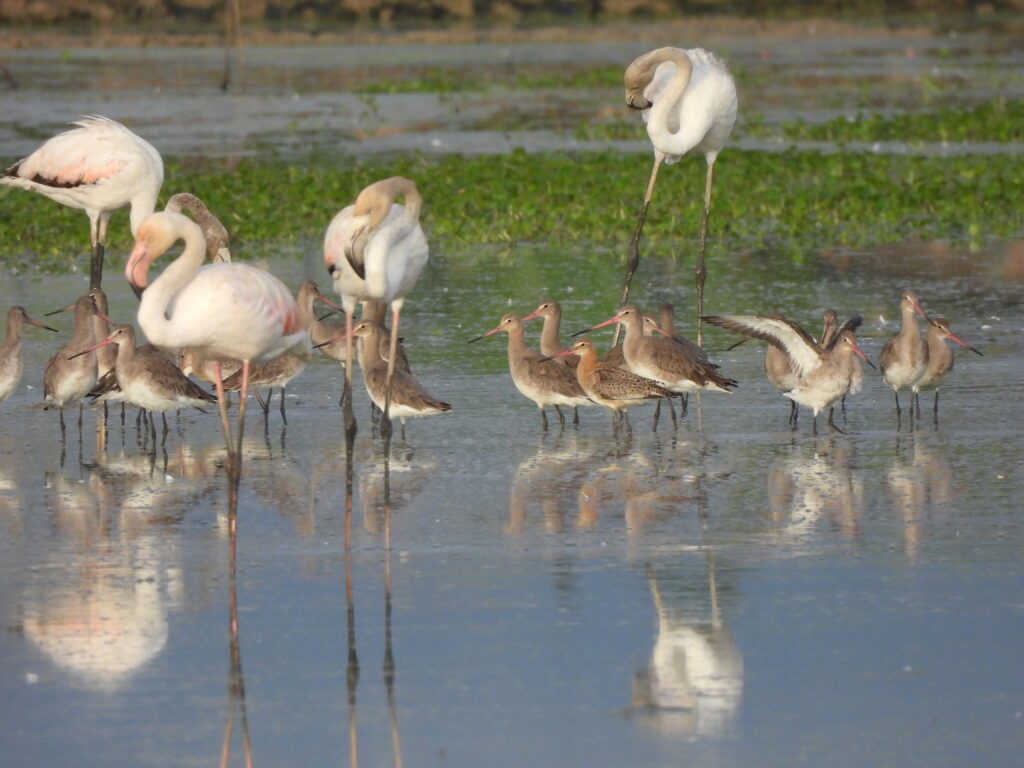
We spent most of our birding time scoping flooded rice paddies for waders and gulls among flamingos (Phoenicopterus roseus), glossy ibises, gray herons (Ardea cinerea), great egrets (Ardea alba) and cattle egrets (Bubulcus ibis). We were treated to good numbers of spotted redshanks, ruffs (Philomachus pugnax) and Temminck’s stints — overall in larger quantities than little stints (Calidris minuta). But the highlight of the first field we stopped at was an adult European herring gull (Larus argentatus) — a vagrant bird from Central Europe among a flock of lesser black-backed gulls (Larus fuscus) and yellow-legged gulls (Larus michahellis).
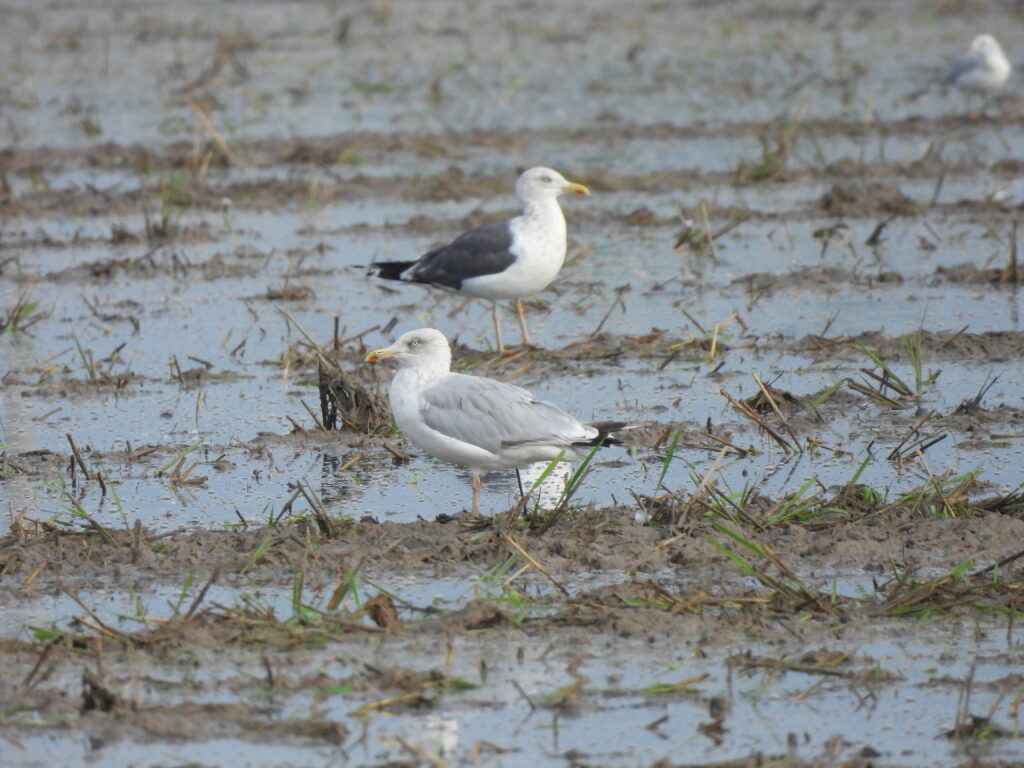
The rice paddies at Camí del Serrallo would yield some great surprises during the weekend. Among a ridiculous number of flamingos, black-headed gulls (Chroicocephalus ridibundus), and diverse waders, Joan spotted a little gull (Hydrocoloeus minutus) from the car while driving. It didn’t take long after we pulled over to find another pectoral sandpiper, along with a curlew sandpiper with a broken leg.
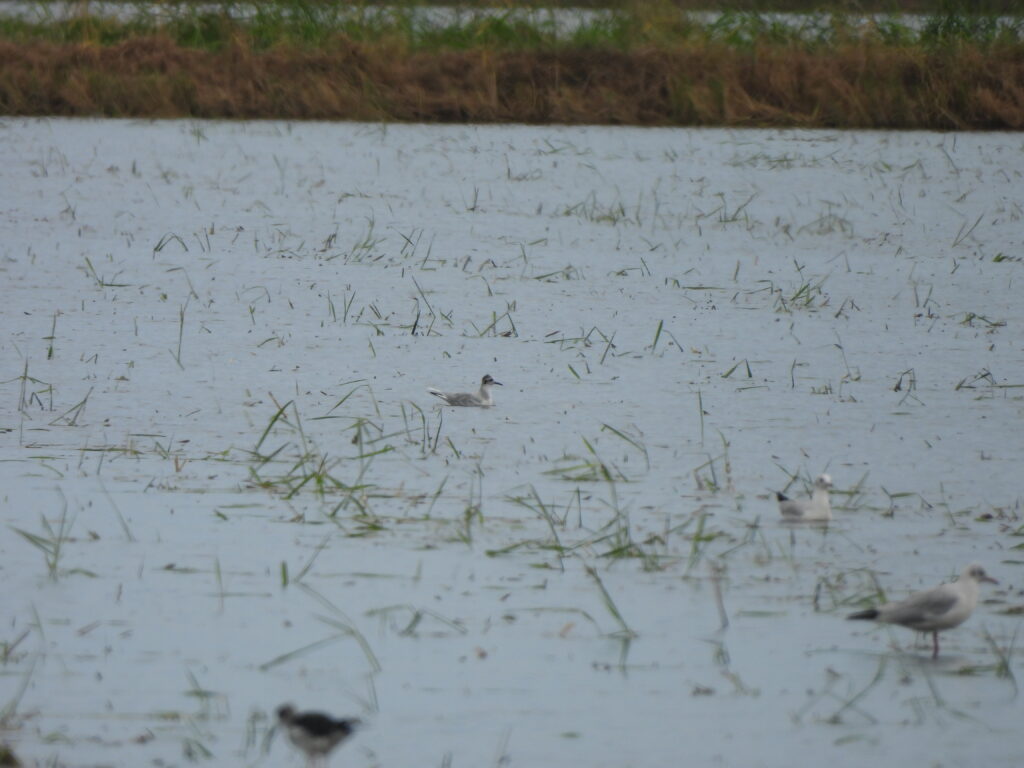
We paid a visit to one of the most notorious birding spots in the Delta: the lawn crop fields of Finca Dacsa. This well-curated lawn has hosted the largest national numbers of a Nearctic vagrant wader, the buff-breasted sandpiper (Calidris subruficollis), back when a small number of these birds reached Spanish land each fall. After a hiatus of some years with no national records, an influx of the species touched down in Iberia over the past weeks again, with almost ten individuals scattered across the Peninsula. As we arrived, among lawns covered in little ringed plovers (Thinornis dubius), western yellow wagtails (Motacilla flava) and the odd northern wheatear (Oenanthe oenanthe), two magnificent buff-breasted sandpipers greeted us as the two birds foraging closest to us from where we parked, offering fantastic close-up views. I’m curious to see whether the future will bring this species back into the group of Nearctic waders that annually show up in Spain — and hopefully find some near home soon.
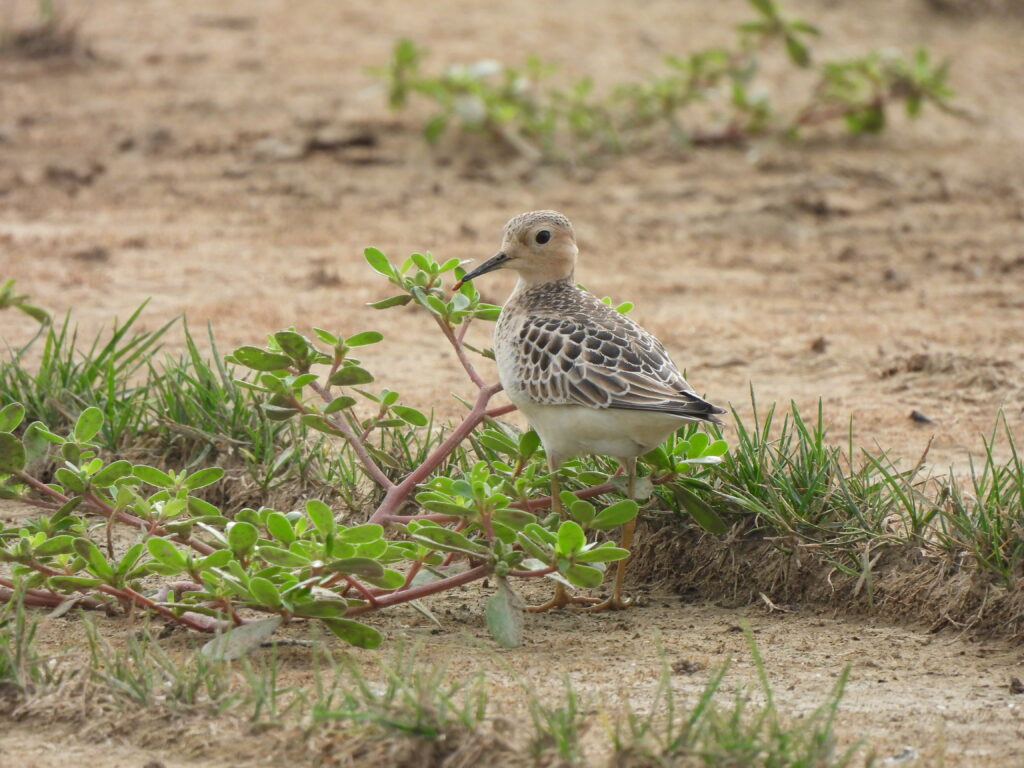
Martín, Roi, Darío, and I headed back to La Catxa after lunch and finally connected with the mega white-tailed lapwing, while the rest of the group headed to the festival, having already seen the bird weeks before. However, the field was once again filled with waders and gulls to keep us entertained for a while. Many had come to twitch the lapwing. Martín was studying an odd lesser black-backed gull while I tried to snap some photos of it. Darío, instead, recorded the lapwing vocalizing — all while our friends were visiting the DBF venue. It was nice to think about how many bird enthusiasts were enjoying their time at that moment, all in the same place, but in so many different ways.
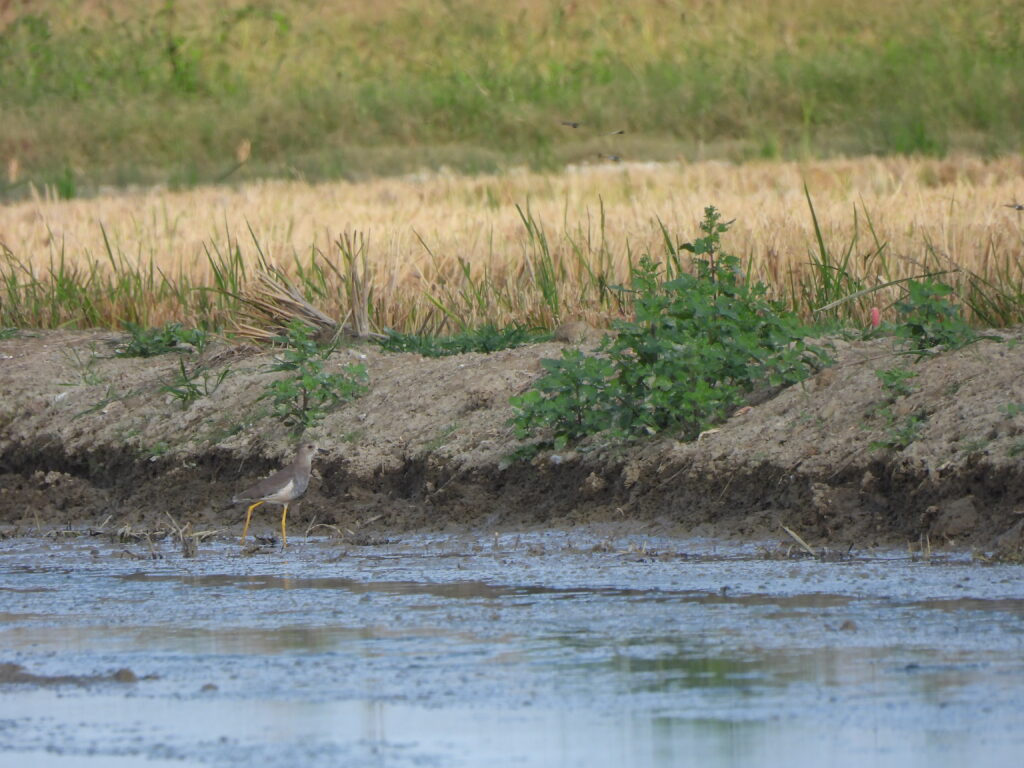
Our team reached the venue parking lot and bumped into our friends just as we heard of a western reef heron (Egretta gularis) that had just been spotted at nearby Filtre Verd — the same spot we had just driven through, where we had seen two Caspian terns (Hydroprogne caspia). We lost the chance to visit the festival on Saturday and soon made it to Filtre Verd and got relatively good views of this vagrant — a lifer for part of the group — as it was chased out of the reeds by little egrets (Egretta garzetta). While we waited for it to show again, a very welcome juvenile white-winged tern (Chlidonias leucopterus) circled the scene a couple of times. We might have seen a possible adult earlier that day on a rice paddy with whiskered terns (Chlidonias hybrida), but were glad to definitely connect with the species.
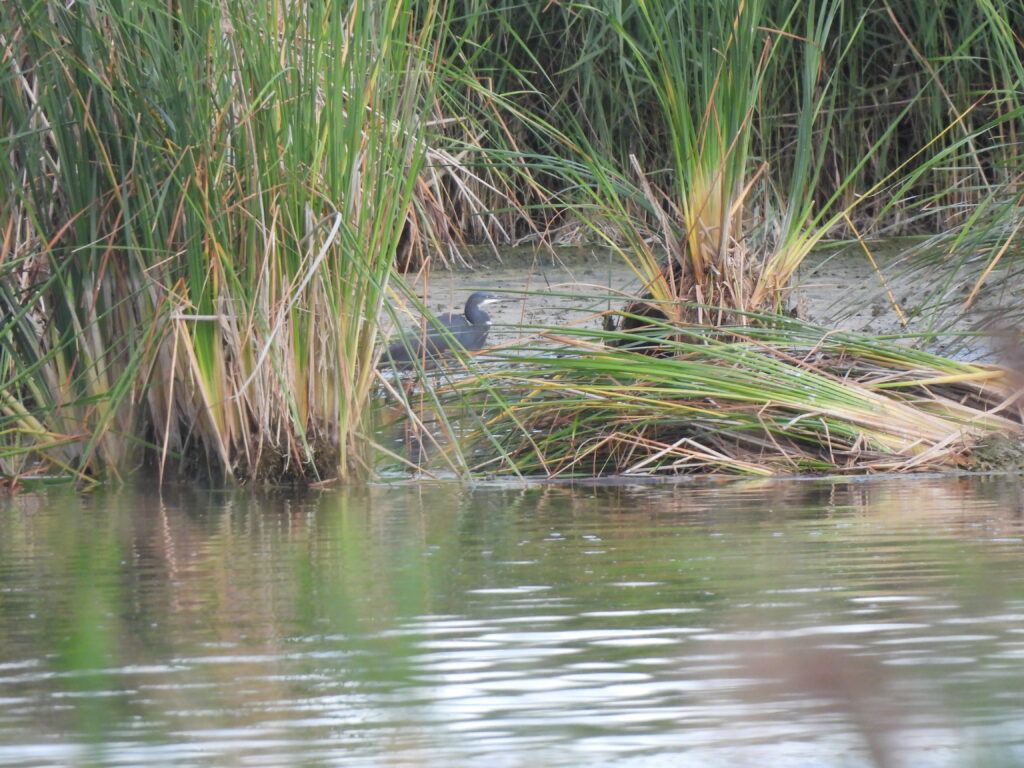
We got news from our friends, who had left the venue and scoped Serrallo again. Joan once again outdid himself — this time finding a red phalarope (Phalaropus fulicarius). What a stunner. While he got distant views with Munir, Marcos, and Arnau, only Marcel Gil and very few others managed to see it, as the bird flew away a few minutes later — before we arrived. Still, we closed the day with some nice chats in the field, close to a pectoral sandpiper and some European golden plover (Pluvialis apricaria), and later in Vinaròs after dinner.
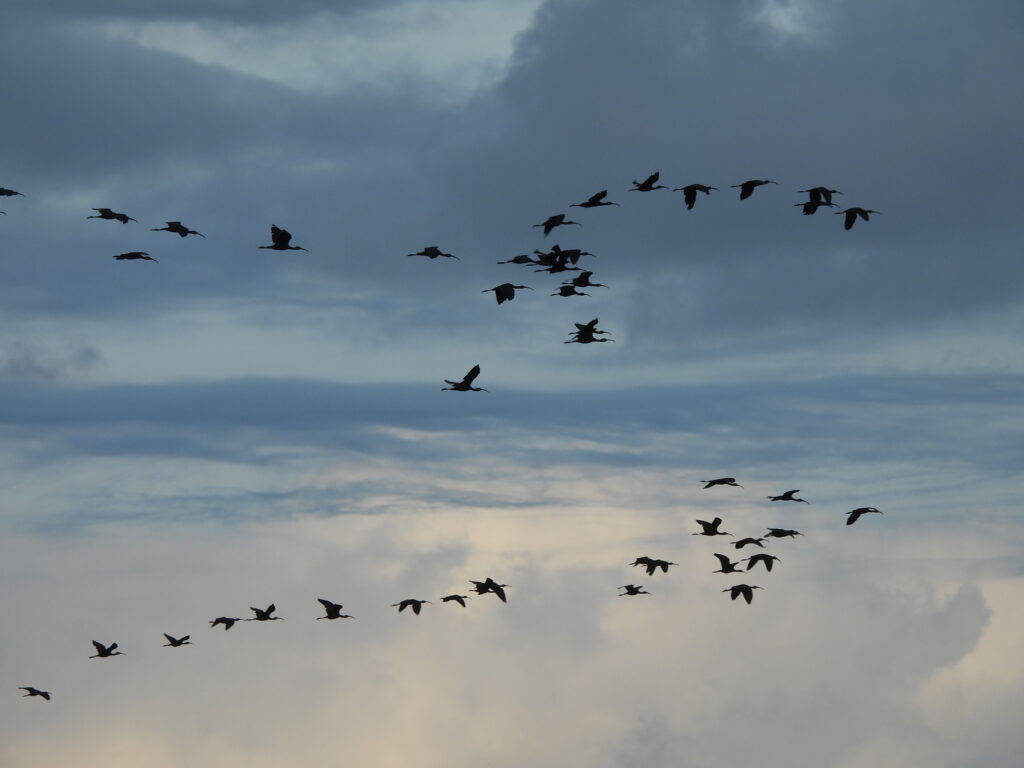
Sunday started off quite strong on the rice paddies at Els Muntells, where we bagged two pectoral sandpipers and good numbers of dunlins and curlew sandpipers. Later in the day, on a paddy near El Goleró, we added a marsh sandpiper (Tringa stagnatilis) to the extremely long list of waders seen during this DBF — this time among numerous Northern lapwings (Vanellus vanellus), curlews (Numenius arquata), and greenshanks (Tringa nebularia).
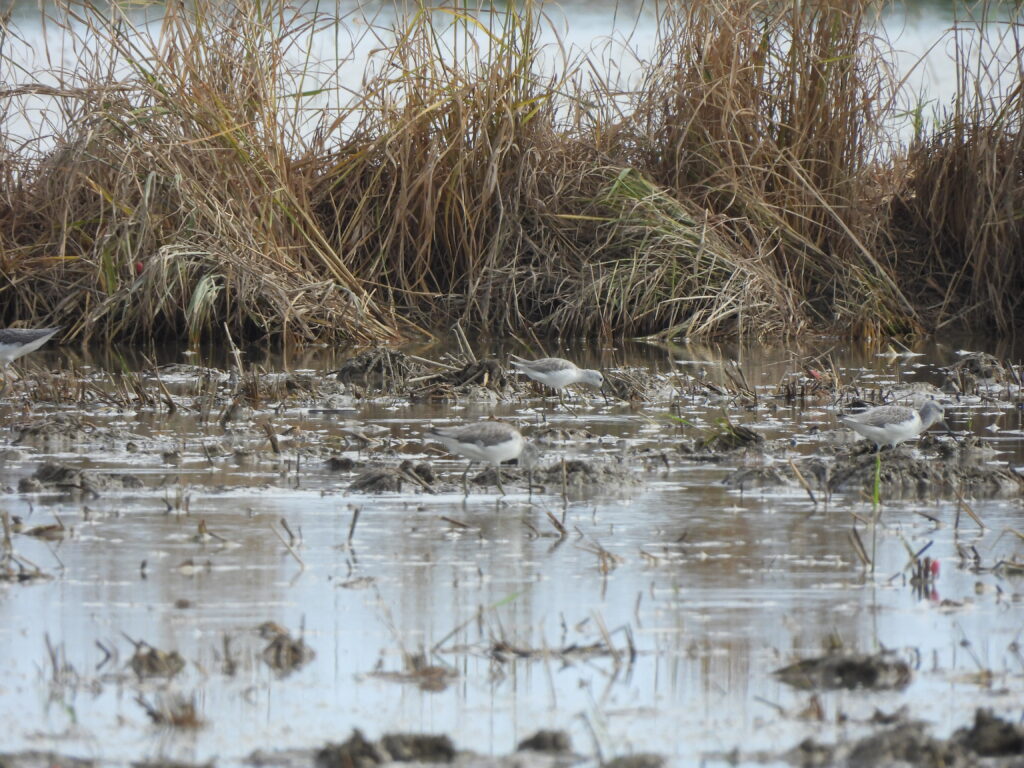
The highlight of the day might have been Port de l’Illa de Mar, a great viewpoint over all the sandy shores of Punta del Fangar. We connected with large numbers of common ringed plovers (Charadrius hiaticula), sanderlings (Calidris alba), ruddy turnstones (Arenaria interpres), black-bellied plovers (Pluvialis squatarola) and many other waders — including some whimbrels (Numenius phaeopus) and bar-tailed godwits (Limosa lapponica) foraging and resting in the shallow waters, only to fly off when chased by a peregrine falcon. Sandwich terns (Thalasseus sandvicensis), common terns (Sterna hirundo), and black terns (Chlidonias niger) fished and rested on the poles — as did a record-breaking total of 53 Caspian terns on site. Another record-breaker was the sighting of 6 ospreys (Pandion haliaetus) patrolling the area, plus the usual western marsh harriers (Circus aeruginosus) and even a flyby honey-buzzard (Pernis apivorus) in migration.
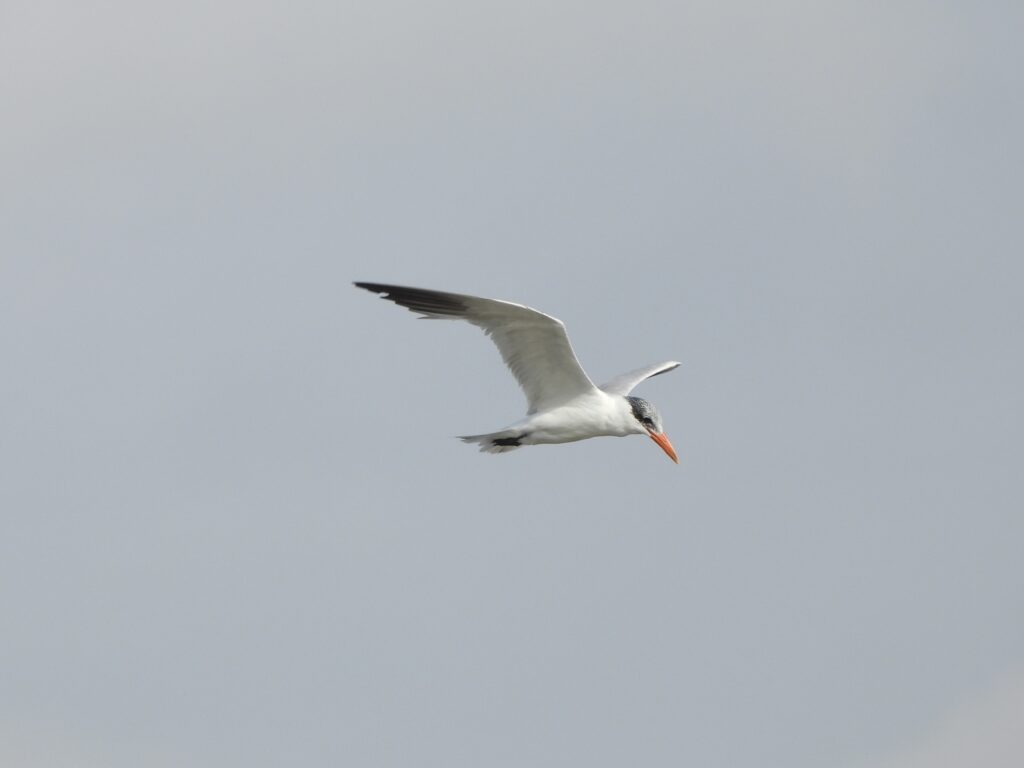
Martín, Darío, and I only reached the festival on Sunday — unfortunately just an hour before closing. I’m happy I managed to connect with old friends, but I wish I had had more time to look through books and souvenirs. The venue takes place at a saltpan area, which meant we managed to connect with a few missed species from earlier in the weekend, such as collared pratincole (Glareola pratincola) and shelduck (Tadorna tadorna). Joan, once again outdoing himself, heard an oddly familiar call from the sky and connected with a flying phalarope — left undetermined, but perhaps the same red phalarope that left Serrallo the previous day. Legendary!
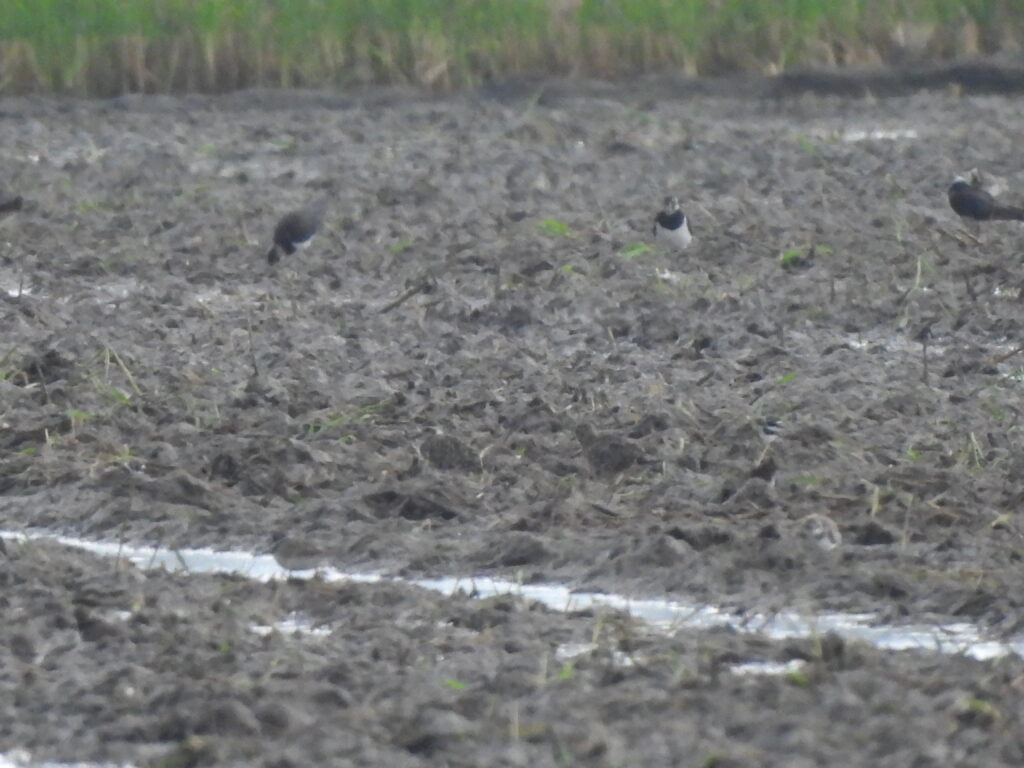
News broke that Marcel had spotted a Siberian golden plover (Pluvialis fulva) in Serrallo, so we all headed there after lunch. An individual of this species has returned to nearby Finca Dacsa for several years, so we were glad to hear about the species being back in the area. However, the weather had significantly worsened, and we could only effectively locate the bird — right next to some European golden plovers — at the very end of the fields, watching from inside the cars, sheltered from the strong winds.
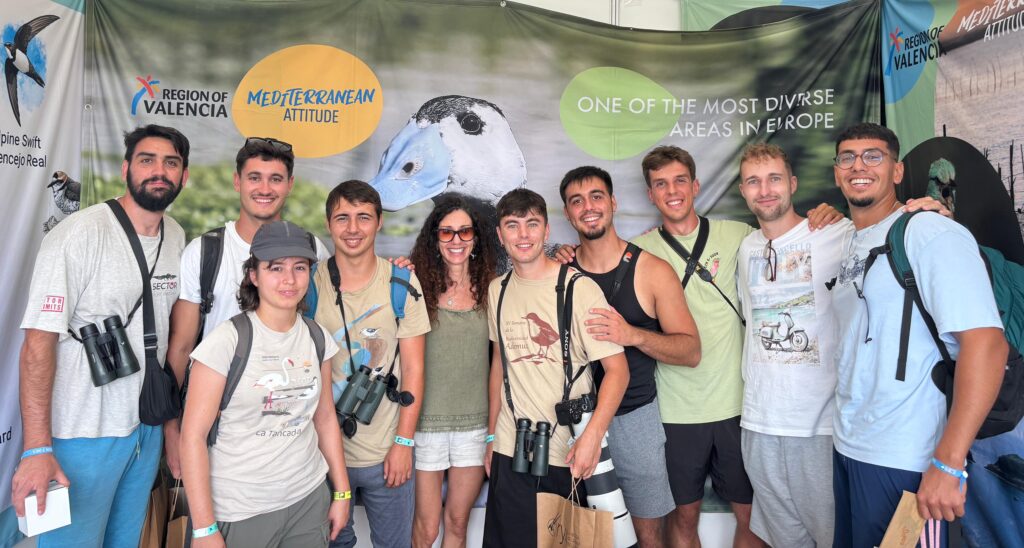
After just a few minutes of observation, a large storm poured hard on us, with hail and heavy rain bringing our particular DBF to a close this year. Marcos, Darío, and I enjoyed some four hours of driving, reminiscing about the awesome couple of days birding with friends in this fantastic location — inspired, and already thinking about what the next one will bring.

